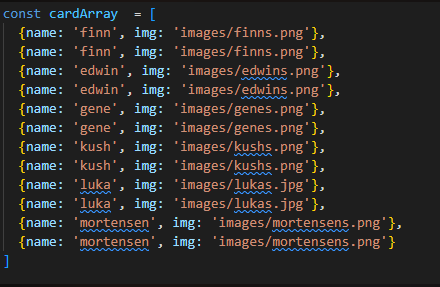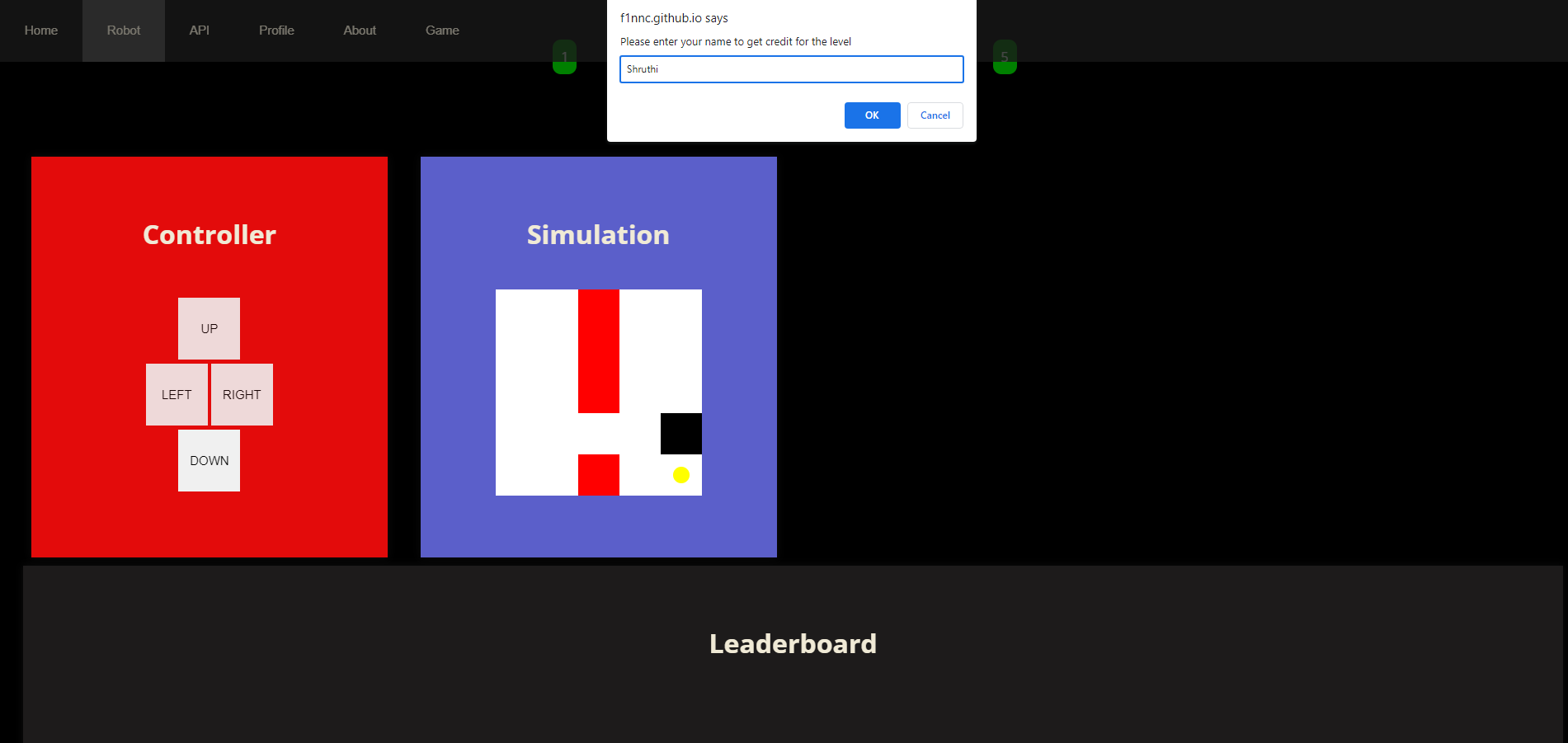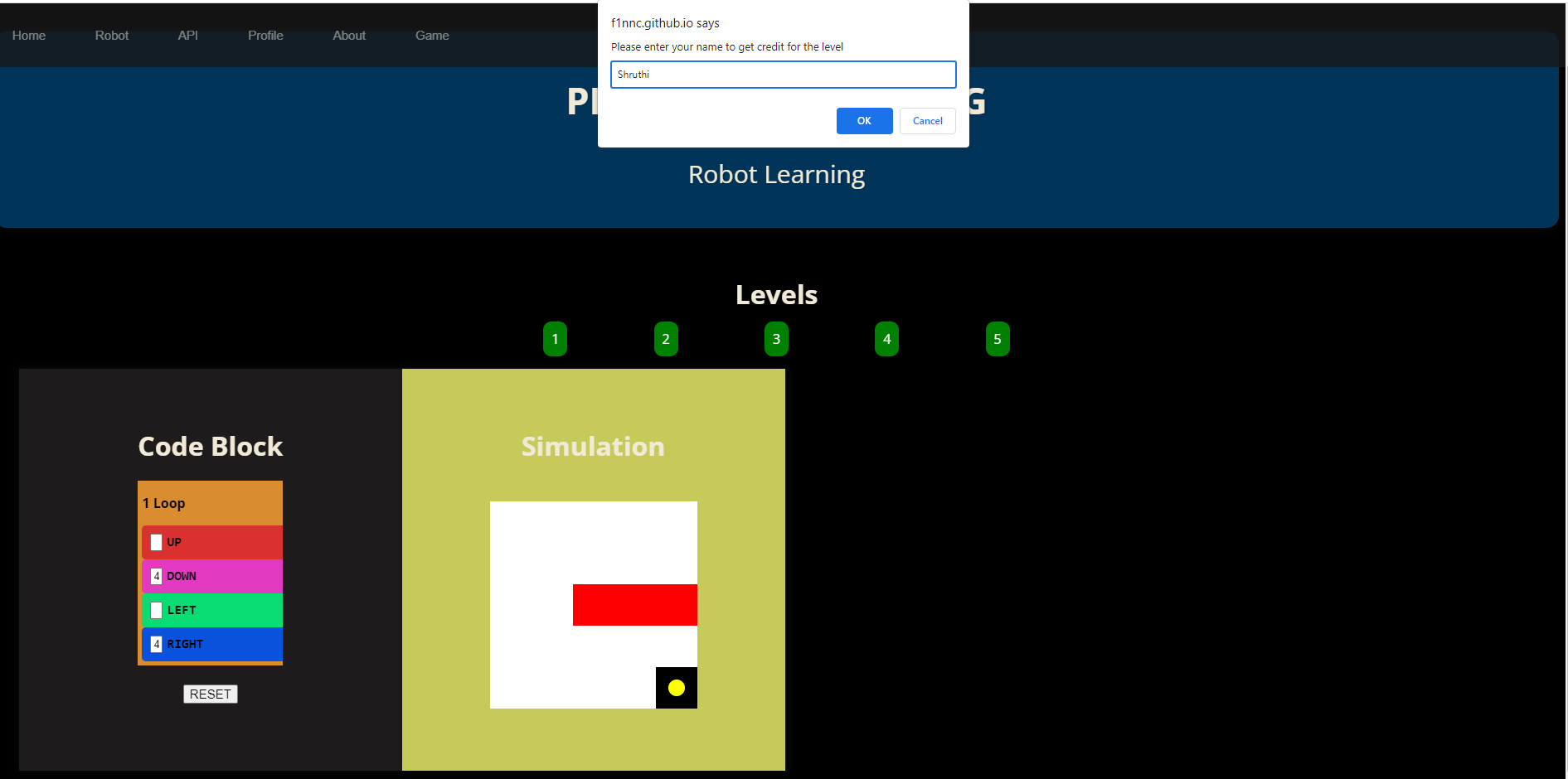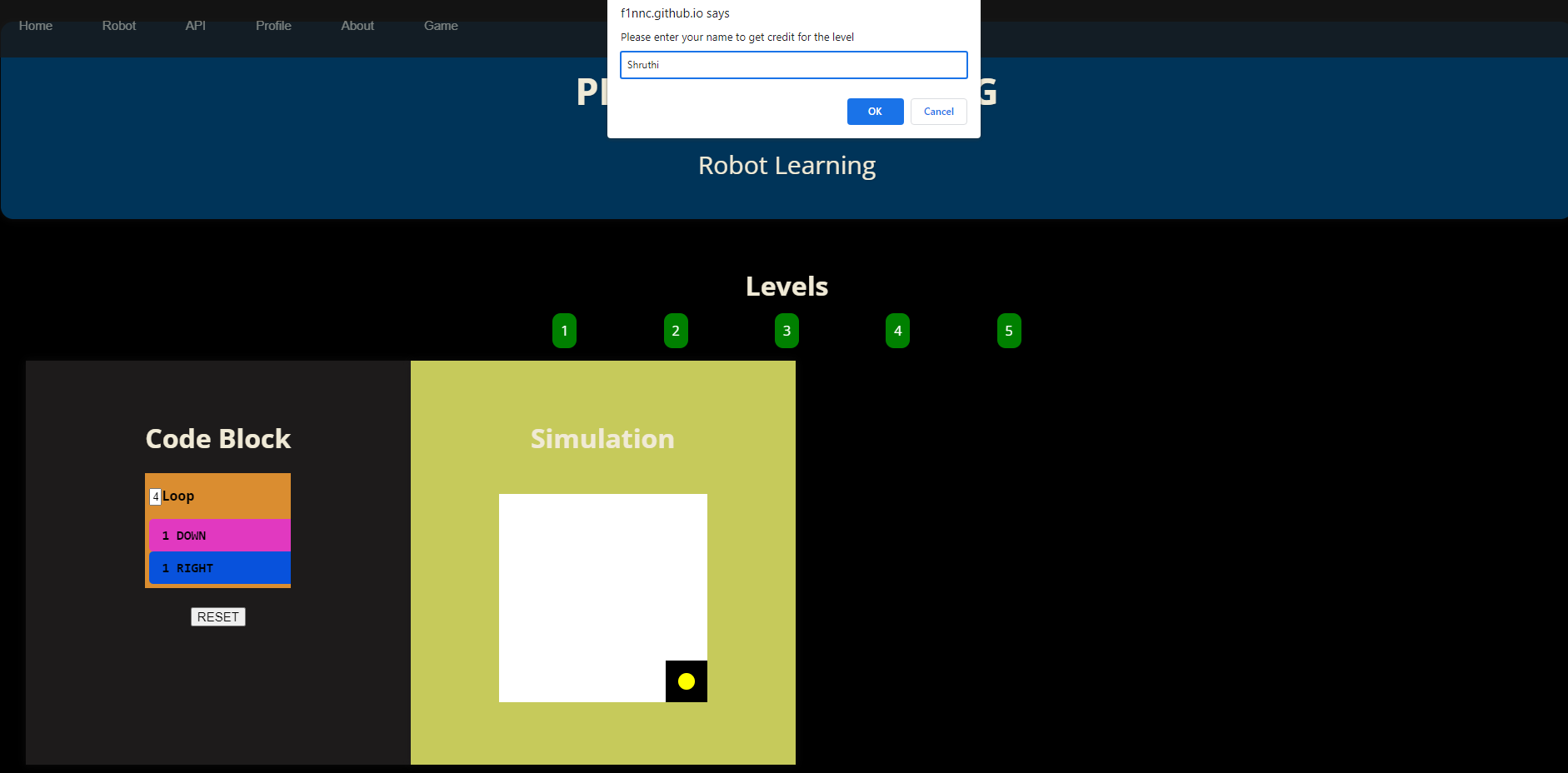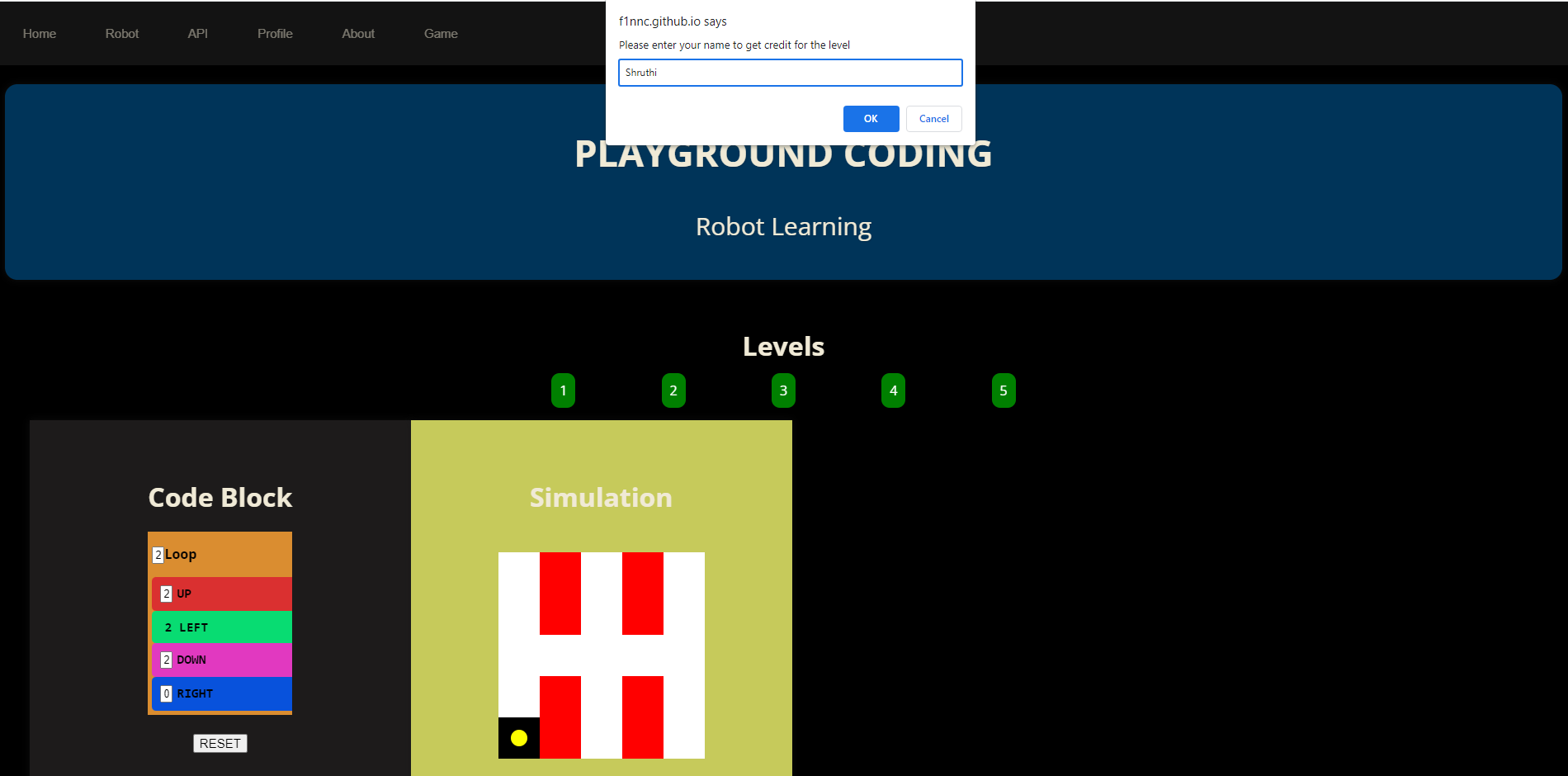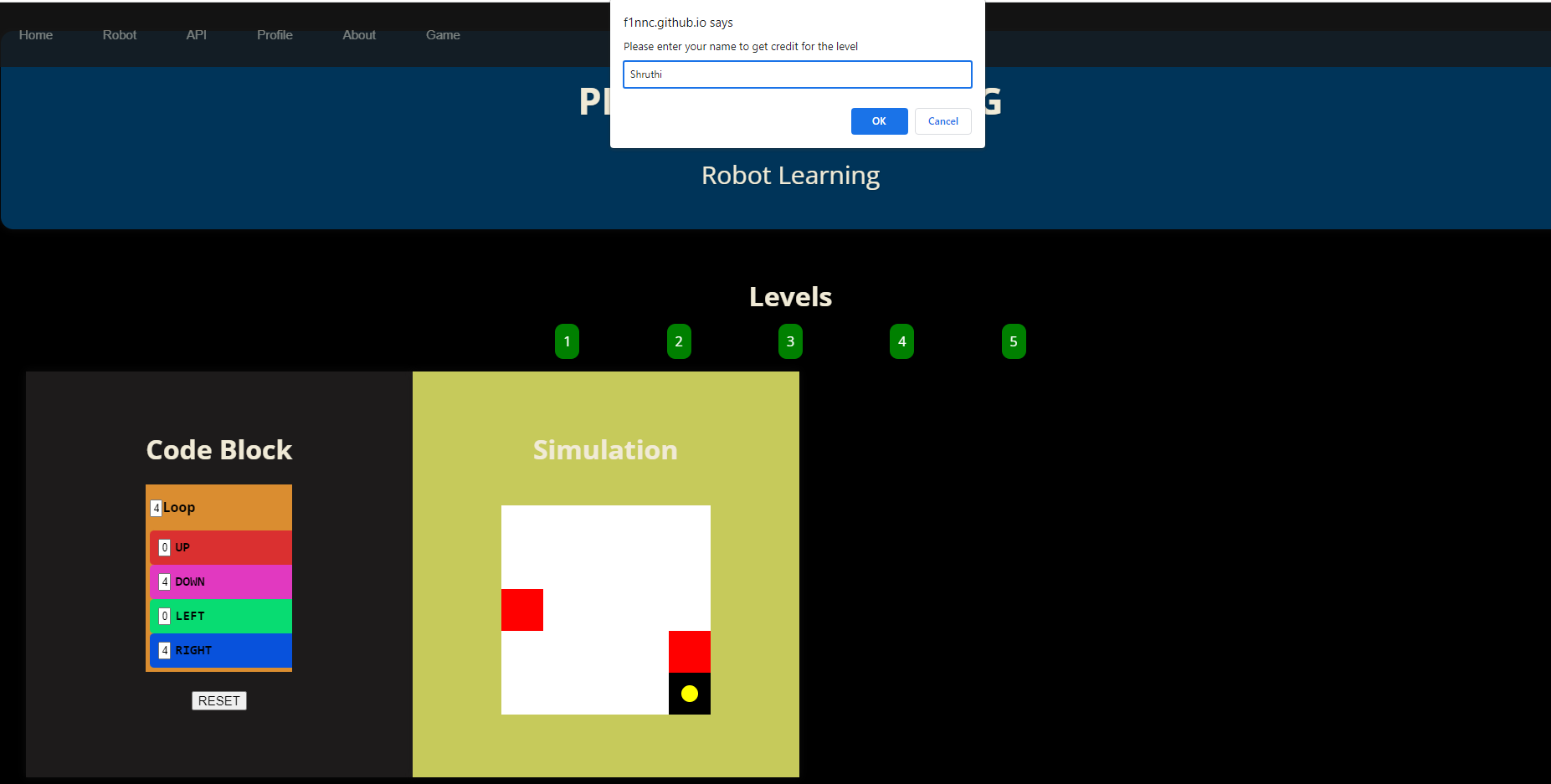P4-M 4/24 Big Idea 3
Lesson about Big Idea 3
Introduction: Zeen
Hello, my name is zeen and today we will be presenting big idea 3. Our topics include 2d arrays, iteration, and lists and dictionaries.
Objectives
Master the concepts of iteration, list, 2d-arrays, Dictionaries, and APIs
Vocab
Here is some vocab during the lesson, you should be familar with them already no need for me to read these out, now I will pass the speaking off to Kush
- Iteration: A process that repates itself
- Array: Sometimes called a list, can keep strings and intergers inside it
- 2D-Array: A collection of data elements arranged in a grid-like structure with rows and columns
- Mutable: the ability to be changed or modified
- Key: A Singular identifier that is associated with a certin value
array = ["Hello", "Hi", "Whats up"]
twoDArray = [["Name", "ID", "Age"], ["Kush", "1", "16"], ["Finn", "2", "16"]]
print(f"This is a normal array: {array}")
print("This is a 2D array")
for row in twoDArray:
print(row)
board = [[' ', ' ', ' '],
[' ', ' ', ' '],
[' ', ' ', ' ']]
# Function to print the current state of the game board
def print_board():
print(" 0 1 2")
for i in range(3):
print(i, end=' ')
for j in range(3):
print(board[i][j], end=' ')
print()
# Function to check if a player has won the game
def check_win(player):
# Check rows for a win
for i in range(3):
if board[i][0] == player and board[i][1] == player and board[i][2] == player:
return True
# Check columns for a win
for j in range(3):
if board[0][j] == player and board[1][j] == player and board[2][j] == player:
return True
# Check diagonals for a win
if board[0][0] == player and board[1][1] == player and board[2][2] == player:
return True
if board[0][2] == player and board[1][1] == player and board[2][0] == player:
return True
# If no win condition is met, return False
return False
# Function to check if the game is a tie
def check_tie():
for i in range(3):
for j in range(3):
if board[i][j] == ' ':
return False
return True
# Function to play the game
def play_game():
# Initialize player and turn counter
player = 'X'
turns = 0
# Loop until the game is over
while True:
# Print the current state of the board
print_board()
# Get the player’s move
row = int(input(f"{player}'s turn. Enter row (0-2): "))
col = int(input(f"{player}'s turn. Enter column (0-2): "))
# Check if the move is valid
if board[row][col] == ' ':
board[row][col] = player
turns += 1
# Check if the player has won
if check_win(player):
print_board()
print(f"{player} wins!")
return
# Check if the game is a tie
if check_tie():
print_board()
print("It's a tie!")
return
# Switch players
player = 'O' if player == 'X' else 'X'
else:
print("That space is already taken. Try again.")
# Start the game
play_game()
times = 0
numbers = [1, 2, 3, 4, 5]
## Loops
for i in range(5):
print("hi")
while times <= 5:
print("hello")
times = times + 1
## Function with a parameters
def print_numbers(x):
for num in x:
print(num)
print_numbers(numbers)
Iteration Game
- Link to the game
- Play the levels (only play the first 2 in class)
- Explain how the game relates to itertation
function run() {
// Read input values from the HTML document and convert them to integers.
UPinput = parseInt(document.getElementById("up").value);
DOWNinput = parseInt(document.getElementById("down").value);
LEFTinput = parseInt(document.getElementById("left").value);
RIGHTinput = parseInt(document.getElementById("right").value);
looper = parseInt(document.getElementById("loop").value);
runner.style.opacity = 0;
// Create an array to hold the movements.
let movements = [];
// Push 'up' movements to the array.
for (let l = 0; l < looper; l++) {
for (let k = 0; k < UPinput; k++) {
movements.push(up);
}
// Push 'down' movements to the array.
for (let i = 0; i < DOWNinput; i++) {
movements.push(down);
}
// Push 'left' movements to the array.
for (let a = 0; a < LEFTinput; a++) {
movements.push(left);
}
// Push 'right' movements to the array.
for (let c = 0; c < RIGHTinput; c++) {
movements.push(right);
}
}
// Set the initial index to 0 and execute each movement in sequence with a delay of 800 milliseconds.
let index = 0;
let intervalId = setInterval(() => {
// If the end of the movements array has been reached, stop executing movements.
if (index >= movements.length) {
clearInterval(intervalId);
win(); // Call the win function.
return;
}
movements[index](); // Execute the movement at the current index.
index++; // Increment the index.
}, 800);
}
List = [1, 2, 3, 4, 5]
Dict = {
1: "Hi",
2: "Hello",
3: "Whats Up"
}
# Why Do I call 0 for the first thing in a list, but 1 for Dict
#
print(List[0])
print(Dict[1])
How I used a dictonary to make a game
Memory Game:James- Link
import random
word_list = ["python", "computer", "programming", "algorithm", "database", "function", "variable", "loop", "iteration", "array", "mutable", "insertion", "deletion", "key", "API"]
word = random.choice(word_list)
scrambled_word = "".join(random.sample(word, len(word)))
print(f"Unscramble the following Computer Science Word: {scrambled_word}")
hints = 1
guesses = 1
guess = ""
while guess != word and guesses <= 4:
guess = input("What's the unscrambled word? ").lower()
if guess != word:
print("Sorry, that's not the word. Try again!")
if guesses == 1:
guesses += 1
elif guesses == 2:
print(f"Hint 1: The first letter of the word is '{word[0]}'")
guesses += 1
elif guesses == 3:
print(f"Hint 2: The second letter of the word is '{word[1]}'")
guesses += 1
else:
print(f"All 4 Guesses have been used, you didn't unscramble the word, the word was {word}")
guesses += 1
else:
print("Congratulations, you unscrambled the word!")
Hacks: Your Score/1
General 0.3
- Copy this noteboook into your personal fastpages
- Answer all questions
- put the question in a new markdown block (so we can grade faster)
Iteration 0.2 (can get up to 0.23)
- Get to level 5
- Take ScreenShots of your name inside the box an put them in your ticket
- Create a code segment with iteration that does something cool
2D array 0.2 (can get up to 0.23)
- Explain how the tic tac toe game works
- Give 3 Examples of games that can be made from 2D arrays
List and Dictionaries 0.2 (can get up to 0.23)
- Explain the differences between Lists and Dictionaries
- Make a code block that manipulates either a list or a dictionary
General Hacks
What are some examples of 2d Arrays
Some examples of 2d arrays are [Alexa, May 16th, girl], [Dylan, August 15th, boy], [Leslie, September 7th, girl] and [DNHS, 2009, #1], [WVHS, 2002, #2], [MC, 1974, #3]
What is a modern day game that could be classified as a 2D array
A modern day game that could be classified as a 2D array is Chess.
Describe a 2D array in your own words
a 2D array is a list of lists with similar values
What is the defenition of iteration in your own words
Iteration is the process of simplifying/making code more efficient by allowing for loops and repeating steps
Explain how the game relates to itertation
The game uses iteration to move the robot to a certain position with only a few lines of instruction that repeat.
What parts of the code use iteration (game example)
The game utilizes iteration multiple times. Any level that involves a loop, uses iteration. Leves 2 through 5 have iteration.
In your backend code for the game, many for loops are used to have a condition for every possiblility of the user's action/movement. Explain which parts of the code use lists
The code defines the list "word_list" with all the possible words for the user to unscramble.
Explain what list manipulation is happening in that part
A random item (word) from the list is chosen, as long as it's length. This random word is assigned to the variable "word. It is then scrambled up and assigned to the variable "scrambled_word".
singers = ["Trace Adkins", "Sammy Kershaw", "Taylor Swift", "Josh Turner", "Don Williams", "Blake Shelton", "Raelynn", "Dan and Shay", "George Strait"]
for singer in singers:
if len(singer) < 10:
print("singer's name is too short")
else:
print(singer + " is good to go!")
2D Array Hacks
Tic Tac Toe game works by defining the variable "board" with 3 different lists (which is a 2D array.) It then defines a funtion where it prints the board and a function that checks if there is a win or a tie. Finally, it defines the function "play_game" that has a while loop that contains conditionals. It takes the user's inut and calls the functions defined earlier. 3 examples of games that can be made from 2D arrays are snake, connect 4, and a maze.

haywire_album = {
"title": "Haywire",
"artist": "Josh Turner",
"year": 2012,
"genre": ["Country"],
"tracks": {
1: "Haywire",
2: "Why Don't We Just Dance",
3: "I Wouldn't Be A Man",
4: "I'll Be There",
5: "Friday Paycheck",
6: "This Kind Of Love",
7: "Loving You On My Mind",
8: "The Answer",
9: "Your Smile",
10: "As Fast As I could",
11: "Let's Find a Church",
12: "All Over Me",
13: "Eye Candy",
}
}
# Printing the dictionary
print(haywire_album)
print(haywire_album.get('tracks')[4])
# double indexing
print(haywire_album['tracks'][4])
haywire_album["producer"] = set(['Josh Turner', 'Frank Rogers', 'Chris LeDoux'])
# Printing the dictionary
print(haywire_album)
# Printing the producer set
print(haywire_album["producer"])
haywire_album["genre"].append("Country")
print(f"Title: {haywire_album['title']}")
print(f"Artist: {haywire_album['artist']}")
print('Producer(s):')
for prod in haywire_album['producer']:
print(f"- {prod}")
print(f"Year: {haywire_album['year']}")
print("Genres:")
for genre in haywire_album['genre']:
print(f"- {genre}")
print("Tracks:")
for track_number, track_title in haywire_album['tracks'].items():
print(f"{track_number}. {track_title}")
